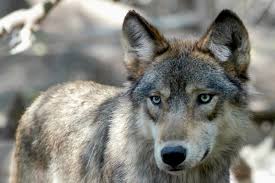Colorado Parks and Wildlife (CPW) has successfully completed the second phase of its gray wolf reintroduction initiative, with more than a dozen wolves relocated from British Columbia to Colorado’s wilderness. This milestone marks another significant step in restoring the species to the state after decades of absence.
Details of the Wolf Relocation
According to a CPW announcement, 15 gray wolves—comprising seven males and eight females—were captured from the central interior of British Columbia over a six-day period. These wolves were carefully selected based on criteria established by the Colorado Wolf Restoration and Management Plan, ensuring their suitability for reintroduction into the wild.
Biologists excluded wolves with significant injuries or health conditions, such as fractured limbs, nonfunctional canine teeth, missing eyes, and infections like mange or lice. This rigorous selection process was designed to maximize the wolves’ chances of survival and adaptation to their new environment.
Criteria for Selection
The wolves were chosen from areas where livestock depredation incidents were not reported, reducing the likelihood of human-wildlife conflicts after their release in Colorado. By selecting wolves from regions without overlapping livestock territories, CPW aims to promote a smoother transition for the predators into their new habitat.
Release Locations and Timing
The wolves were released in Eagle County and Pitkin County on three separate evenings—January 12, 14, and 16. Each release involved five wolves, strategically introduced to areas deemed suitable for their survival and integration into the ecosystem.
Background of the Reintroduction Effort
Colorado’s wolf reintroduction efforts were initiated following a 2020 ballot measure where voters approved the restoration of the species to the state. The initiative seeks to reestablish gray wolves in their historical range, promoting ecological balance and biodiversity.
The first phase of the program took place in 2023, and this latest effort represents a continuation of the plan to restore a self-sustaining wolf population in Colorado.
Ensuring Ecological Balance
Gray wolves play a crucial role in maintaining healthy ecosystems by controlling populations of herbivores like elk and deer, which can overgraze vegetation if left unchecked. By reintroducing wolves, Colorado aims to restore natural predator-prey dynamics and enhance the overall health of its wilderness areas.
Public and Environmental Impact
The reintroduction of wolves has sparked mixed reactions among Colorado residents. Conservationists and environmental groups celebrate the effort as a step toward ecological restoration, while ranchers and livestock owners have expressed concerns about potential wolf-livestock conflicts.
CPW has addressed these concerns by implementing measures to mitigate conflicts, such as offering compensation for livestock losses and providing education on coexistence strategies.
The Role of Public Awareness
As part of its outreach efforts, CPW continues to educate the public about the importance of wolves in ecosystems and the steps being taken to ensure a balanced coexistence between humans and wildlife.
Looking Ahead
The success of Colorado’s wolf reintroduction program depends on ongoing monitoring and adaptive management. CPW biologists will closely track the wolves’ movements, health, and interactions with the environment to evaluate the program’s progress and address any challenges that arise.
This second release marks a promising advancement in Colorado’s commitment to wildlife conservation and ecological restoration.
Disclaimer – Our editorial team has thoroughly fact-checked this article to ensure its accuracy and eliminate any potential misinformation. We are dedicated to upholding the highest standards of integrity in our content.





More Stories
Second Year of Colorado Wolf Reintroduction Sees 15 New Additions
Second Year of Colorado Wolf Reintroduction Sees 15 New Additions
Second Year of Colorado Wolf Reintroduction Sees 15 New Additions